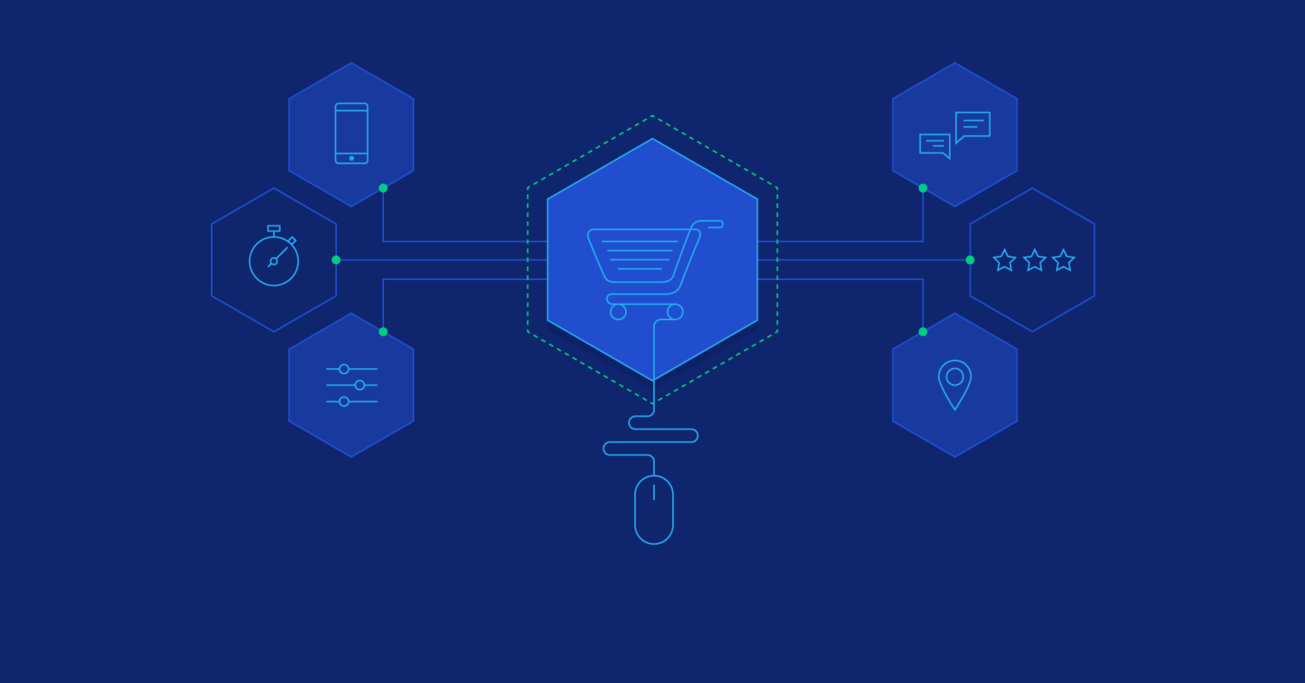Prominent E-commerce Trends and Their Influence on Design (with Infographic)
Many exciting trends in e-commerce are on the horizon, from AI and AR to chatbots and voice ordering. The future of e-commerce will be shaped by trailblazing tech and savvy UX design (with infographic).
Many exciting trends in e-commerce are on the horizon, from AI and AR to chatbots and voice ordering. The future of e-commerce will be shaped by trailblazing tech and savvy UX design (with infographic).
Miklos is a UX designer, product design strategist, author, and speaker with more than 18 years of experience in the design field.
Expertise
PREVIOUSLY AT

E-commerce needs no introduction. It’s spreading at a rapid pace far and wide on every continent through every industry and retail sector—B2C and B2B. It’s putting traditional brick-and-mortar retailers out of business left, right, and center and still has plenty of room to grow.
There is potential for tremendous expansion ahead. E-commerce sales worldwide amounted to 2.3 trillion dollars in 2017 and revenues are projected to more than double to nearly 5 trillion dollars in 2021 (Statista). Amazon has been around for almost 25 years and like an insatiable black hole, continues to devour every retail sector there is.
As e-commerce UX has evolved, certain UX/UI patterns have been established along with other e-commerce UX design best practices. E-commerce trends for 2018 see some fundamentals improving (search and discovery, shipping speeds, mobile UX) while advancing and refining the traditional e-commerce model with innovative layers of tech (AR/VR, artificial intelligence, shop-the-look, etc.).
One of the big trends is personalized, relevant, and seamless e-commerce UX. Given technology’s constant influence on consumer behavior—and people’s reliance on mobile devices—companies must create experiences for today’s shoppers that are based on individual, contextual intent. Seamlessly integrating the “magic hand” of AI and machine learning into the shopping experience will certainly help this trend evolve further and improve the user experience.
Other emerging hot trends in the industry—high-quality photography, AR, GIF animations, quick-start seamless videos, and 360-degree views all help sell products faster.

Cynthia Savard Saucier, director of design at Shopify, suggests that one way to add more high-quality content to an e-commerce experience would be to add a 360° pannable image of a model wearing a product. Experimenting with 360° product views brought golfsmith.com an increase in conversion rates that were at minimum 10%, and for some products up to 40%.
The augmented reality e-commerce trend is heating up, and many established brands, from IKEA and Sephora to Lacoste, are jumping on the bandwagon.
For example, aiming to help customers know their body measurements before buying clothes online, a leading Japanese fashion e-commerce site Zozotown has kicked the game up a notch by recently introducing a smart bodysuit called Zozosuit.
The outfit has stretch sensors that allow users to instantly measure their body. By placing a smartphone in front of it, your body measurement data can be transferred via Bluetooth from the outfit to the Zozotown mobile app.

There are many exciting trends in the e-commerce industry on the horizon. In the short term, these and other groundbreaking developments will continue to enhance the online experience for the consumer. Additionally, in the longer term, we can look forward to more innovation taking place, from pioneering technologies utilized by established brands and new startups, to trailblazing e-commerce UX designs by savvy e-commerce designers and e-commerce website design firms.

Further Reading on the Toptal Blog:
Understanding the basics
What does etail mean?
Short for “electronic retailing,” etailing is the selling of goods via the internet.
What is the difference between e-Commerce and etailing?
Etailing is retailing over the internet but includes only the business-to-consumer (B2C) segment where the business sells goods to the consumer. E-commerce is a broader term which includes all the four segments of business: B2C, B2B, C2C, and C2B.
What is the purpose of a chatbot?
A chatbot is a computer program or an artificial intelligence which conducts a conversation via auditory or textual methods and are typically used in dialog systems for various practical purposes including customer service or information acquisition.
What is a mobile-first approach?
Mobile-first strategy is where designing a website for smartphones, tablets, and mobile devices takes priority over desktops—a web designer will build a site given the constraints of a mobile platform (small screen, slower processors) and then either copy or improve the site for desktop use.
What is e-commerce and how does it work?
E-commerce (electronic commerce) is the buying and selling of products or services, making money transfers, and transferring data over the internet. It allows people to do business with no barrier of distance and time.
What does CX stand for in marketing?
CX stands for customer experience and is the product of an interaction between an organization and a customer over the duration of their relationship.
What is personalized content?
Content personalization (or customization) is a strategy that relies on visitor data to deliver relevant content based on audience interests and motivations.
Miklos Philips
London, United Kingdom
Member since May 20, 2016
About the author
Miklos is a UX designer, product design strategist, author, and speaker with more than 18 years of experience in the design field.
Expertise
PREVIOUSLY AT


